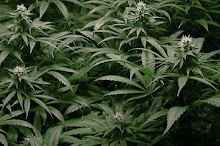By Kelly Riddell - The Washington Times - Thursday, June 25, 2015
The National Institutes of Health is dedicating $3 million to fast-track the development of drugs to treat marijuana addiction — an estimated 4.2 million Americans are hooked on cannabis — even as the president encourages its legalization and more states look to enact laws for its recreational use.
“Cannabis use is an increasing public health concern in the United States that requires immediate attention,” reads the government’s grant proposal, issued in May. “Given the high prevalence of marijuana use and its associated disorders and the large number of people who seek treatment, there is a critical need to discover and develop safe and effective treatments for [cannabis use disorders].”
The National Institutes of Health and the National Institute on Drug Abuse plan to award $3 million to fund three projects aimed at fast-tracking research on drugs to help curb marijuana abuse, and the Food and Drug Administration has not approved any medications to treat pot addiction.
In its proposal, the National Institute on Drug Abuse states that marijuana is the most commonly used illicit drug, with an estimated 2.4 million people trying it for the first time last year, and has the highest number of Americans dependent on or abusing it.
The institute’s call for research seems to divert from policies touted by the Obama administration, which has been the most progressive in history allowing for marijuana use.
In March, President Obama said he was “encouraged” by efforts at the state level to allow greater access to marijuana. In an interview with The New Yorker last year, he said, “I don’t think [marijuana] is more dangerous than alcohol.”
During Mr. Obama’s tenure, the Department of Justice said it would not prosecute or enforce laws against the production and sale of marijuana at the state level. To date, 23 states and the District of Columbia have enacted laws allowing pot to be used for a variety of medical conditions. Colorado, Oregon, Washington, Alaska and the District of Columbia have permitted recreational use of pot.
The administration’s most recent move loosening the federal restrictions on weed was made Monday, when it lifted a bureaucratic requirement for those wishing to conduct scientific research on the drug.
For committing $3 million in taxpayer money to find a treatment to a drug that the administration is looking to make more accessible, the National Institute on Drug Abuse gets this week’s Golden Hammer, The Washington Times’ weekly distinction highlighting waste, fraud and abuse — or in this case hypocrisy — in the federal government.
“The public discourse has shifted in recent years to only want to talk about the benefits of marijuana. But addiction is the huge elephant in the room that many lawmakers want to sweep under the carpet,” said Kevin Sabet, who served in the Obama administration as senior adviser at the White House Office of National Drug Control Policy. “The problem is huge and, as marijuana becomes more legal, we’re going to be seeing it more often.”
According to a study by researchers at Carnegie Mellon University, the number of heavy marijuana users has increased sevenfold in the U.S. since its lowest point in 1992. Although the heavy marijuana users represent only about 2 percent of the U.S. population, daily and near-daily marijuana users consume 80 percent of the marijuana in the country.
“The entire medical community is aware of marijuana addiction and how big a problem it is,” said Dr. Stuart Gitlow, a former president at the American Society of Addiction Medicine. “If we go back to the time of Prohibition — from a public health standpoint it was an enormous success, there was a per capita drop in the consumption of alcohol, in accidents related to alcohol, and liver disease was reduced by two-thirds. After it ended, all of these stats went back to where they were before.”
He predicted similar results as marijuana prohibition eases.
“Ending the prohibition of marijuana, what we’ll see is a dramatic increase in its use and the total number of people affected by issues like intoxication and addiction,” he said.
Mr. Gitlow estimates that 15 percent to 20 percent of youths and 10 percent of adults who try marijuana will become addicted to it. Qualities commonly associated with pot addiction are apathy, loss of concentration, paranoia and increased likelihood of psychosis, which leads to increased psychiatric admissions, he said.
Read more: http://www.washingtontimes.com/news/2015/jun/25/marijuana-addiction-drug-research-gets-3-million-g/#ixzz3e8y20im5
Follow us: @washtimes on Twitter





No comments:
Post a Comment